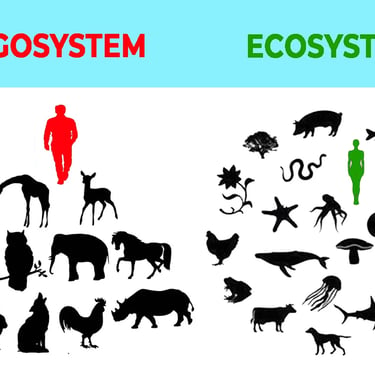The art of co-exisiting
The importance of understanding the art of co-existence and ways to incorporate it into daily life.
Rajesh Chand
2/10/20252 min read


The Art of Co-Existing: Embracing an Eco-System Over an Ego-System
Co-existing is an art—one that not everyone has mastered. It is a skill that must be nurtured over time and passed down to future generations through culture, traditions, and education. In a world that often celebrates individuality and personal achievements, we sometimes forget that true progress comes from working in harmony with others, both human and non-human.
From Ego-System to Eco-System: A Shift in Perspective
For centuries, humanity has operated within an ego-system—a mindset that prioritizes personal or collective human gains at the expense of nature and other beings. This perspective fosters competition, exploitation, and a disconnect from the very environment that sustains us. However, by shifting towards an eco-system mindset, we begin to see ourselves not as separate from nature but as integral parts of a vast, interconnected web of existence.
This transformation in thinking allows us to embrace the idea that we are not isolated entities, but rather, vessels through which a greater consciousness expresses itself. Every tree, animal, river, and star plays a role in this grand symphony of life. When we acknowledge this interconnectedness, we move beyond self-interest and start considering the well-being of all life forms.
A Mindset Rooted in Interconnection
To co-exist harmoniously, we must cultivate an attitude that recognizes the deep links between all beings. Nature operates on balance—predators and prey, seasons, ecosystems—all functioning in perfect synchronization. Similarly, when humans respect and align with these natural rhythms, we create a world that is not only sustainable but also thriving.
Instead of seeing ourselves as superior beings who shape the world according to our desires, we should recognize that our actions have ripple effects on everything around us. Whether it's deforestation, pollution, or overconsumption, our choices impact the planet and, ultimately, our own future.
Practical Ways to Implement Co-Existence in Daily Life
Respect Nature – Simple acts like reducing waste, conserving water, and protecting wildlife contribute to a healthier planet.
Practice Empathy – Understanding different perspectives, cultures, and species' needs helps foster a more inclusive world.
Support Sustainable Practices – Choose eco-friendly products, support ethical businesses, and encourage policies that promote sustainability.
Educate the Next Generation – Teach children the importance of balance, respect, and interconnectedness through stories, traditions, and education.
Adopt a Community-Centered Approach – Instead of a ‘me-first’ mentality, embrace collaboration and mutual growth in social and professional settings.
A Future Built on Harmony
The shift from an ego-system to an eco-system is not just a philosophical idea—it is a necessity for our survival and the well-being of future generations. By acknowledging our place within the larger scheme of existence, we can realign our approach to progress, ensuring that development is not just about economic or technological growth, but also about sustainability, balance, and respect for all life forms.
Co-existing is an art, and like all arts, it requires practice, patience, and dedication. The more we embrace this mindset, the closer we come to creating a world that thrives in harmony, where humanity and nature flourish side by side.

